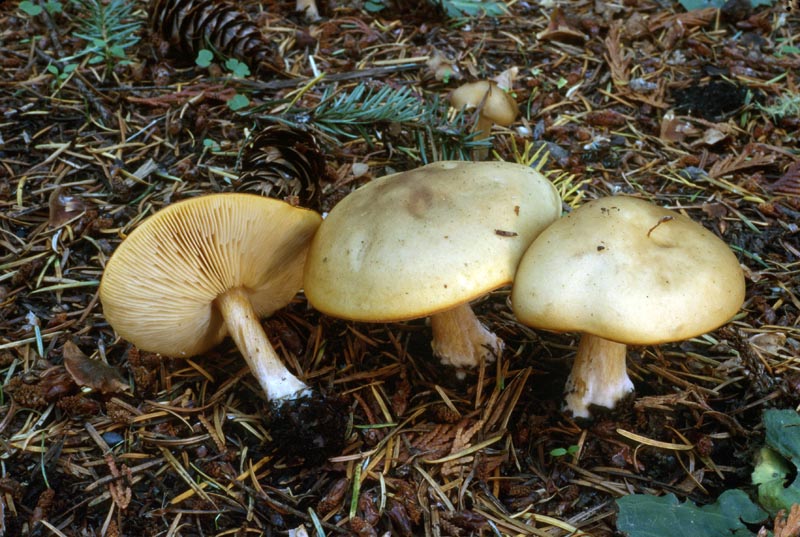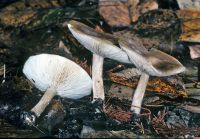Spores: large spores (7.5--10 x 4.5--6.5 µm)
Conservation Status: Not of concern
Melanoleucas are medium-sized fleshy mushrooms with a rather distinctive stature---usually the cap is rather broad in relation to the length of the stipe and usually it retains at least a small umbo well into maturity. The cap usually is some shade of grayish brown and hygrophanous, the gills whitish to cream, the stipe longitudinally striate and rather slender, and veils are lacking. Microscopically, the spores are roughened with amyloid warts, and large, encrusted, pointy cystidia are present in many species. As far as is known, melanoleucas are saprotrophic; they occur in a wide variety of forest and non-forest habitats. Melanoleuca cognata is characterized by its medium to large fruitbodies, smooth, orange to red-brown, somewhat viscid cap that fades to pale tan or pale golden brown, deep ocher gills, and large spores (7.5--10 x 4.5--6.5 µm). It often is rather tall for the genus. The odor is mild or sometimes sweetish with unpleasant undertones. M. cognata is widely distributed, but not common, in forested areas, meadows, parks, and gardens, fruiting from spring into fall. Its often tall stature and golden tones distinguish it from other species in the genus, most of which are poorly known, as no comprehensive study of melanoleucas has been carried out in North America. M. cognata is probably edible, but is not highly regarded, is not common, and without a microscope can be hard to identify with certainty, so we do not recommend it.
PNW Herbaria: Specimen records of Melanoleuca cognata in the Consortium of Pacific Northwest Herbaria database.
CalPhotos: Melanoleuca cognata photos.




